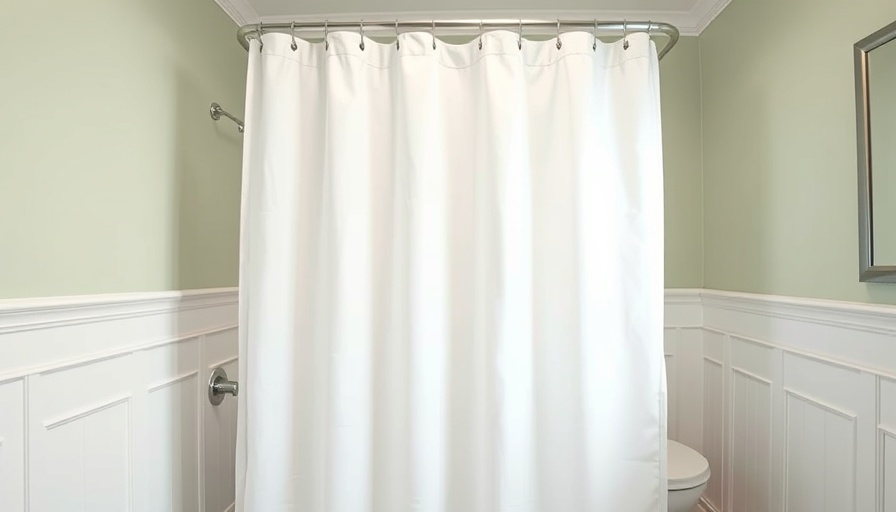
The Great Shower Curtain Debate: Open or Closed?
In the seemingly mundane world of shower curtains, a heated debate brews among homeowners, housemates, and families: should you keep the shower curtain open or closed after your shower? For many, this is more than a trivial decision; it's a matter that impacts home hygiene and aesthetic appeal.
Why Is Moisture Control Important?
Mold and mildew thrive in damp environments, making bathrooms a prime target due to daily steam and water usage. When not properly managed, leftover moisture can lead not only to unsightly stains but also to potential health issues. Mold spores, when inhaled, can trigger allergies and respiratory complications, particularly affecting those with existing sensitivities.
Expert Recommendations: The Case for Closing the Curtain
According to experts from the Good Housekeeping Institute, the verdict is clear: to mitigate moisture retention and maintain a cleaner environment, it's advisable to close the shower curtain after use. Carolyn Forté, the executive director of the Home Care & Cleaning Lab, advocates for closing the curtain tightly to promote better drying of shower walls and curtain materials, ultimately preventing mold buildup.
While some argue that leaving the curtain open allows for more airflow and quicker moisture evaporation, Forté counters that closing the curtain does not impede air circulation enough to warrant the risk of trapping water in folds, which can lengthen drying time.
The Role of Ventilation in Mold Prevention
As essential as the decision to close your curtain is, it must be complemented by good ventilation practices. Keeping a bathroom vent fan on during and after showers can dramatically lower humidity levels. Additionally, opening windows or doors during and after showers facilitates airflow that helps moisture escape. This multi-faceted approach helps to regulate the bathroom's humidity, further supporting mold and mildew prevention.
Choosing the Right Shower Curtain Material
The choice of shower curtain material is also crucial in the fight against mold. Selecting synthetic materials such as vinyl or nylon greatly reduces the opportunity for mold to take hold. Fabric curtains, while visually pleasing, may require more frequent washing and care.
Furthermore, regularly cleaning your shower curtain liner—whether machine-washable or not—can eliminate soap scum and residual moisture that foster mold growth. Routine maintenance is essential in sustaining a healthy bathroom environment.
Practical Tips for a Mold-Free Shower Experience
Dry After Use: Wipe down your curtain and any water-logged surfaces with a towel after every shower.
Use a Squeegee: This can help eliminate water build-up on walls and surfaces, reducing dampness.
Apply Cleaning Solutions: A vinegar-water solution can be an effective treatment for mold already developing on your curtains.
Regular Inspections: Periodically check for mold by inspecting and acting promptly at the first sign of its presence.
Balancing Aesthetics and Hygiene
While cleanliness and hygiene are the ultimate goals, the appearance of your bathroom matters too. Closing the shower curtain post-shower not only promotes hygiene but also enhances the visual appeal, especially when guests are present. Maintaining an organized and neat bathroom space reflects positively on your overall home environment.
Conclusion: Take Control of Bathroom Hygiene
Ultimately, whether you choose to keep your shower curtain open or closed, the focus should be on preventing moisture accumulation and maintaining a cleaner atmosphere in your bathroom. By considering expert advice and incorporating practical cleaning strategies, you can effectively manage the hygiene of your shower space. Prioritize a routine that leverages proper ventilation, material choice, and diligent maintenance to ensure your bathroom remains a safe, pleasant environment.
#showercurtain, #moldprevention, #ventilation, #showercurtainmaintenance, #showercurtainmaterial
 Add Row
Add Row  Add
Add 




 Add Row
Add Row  Add
Add 


Write A Comment